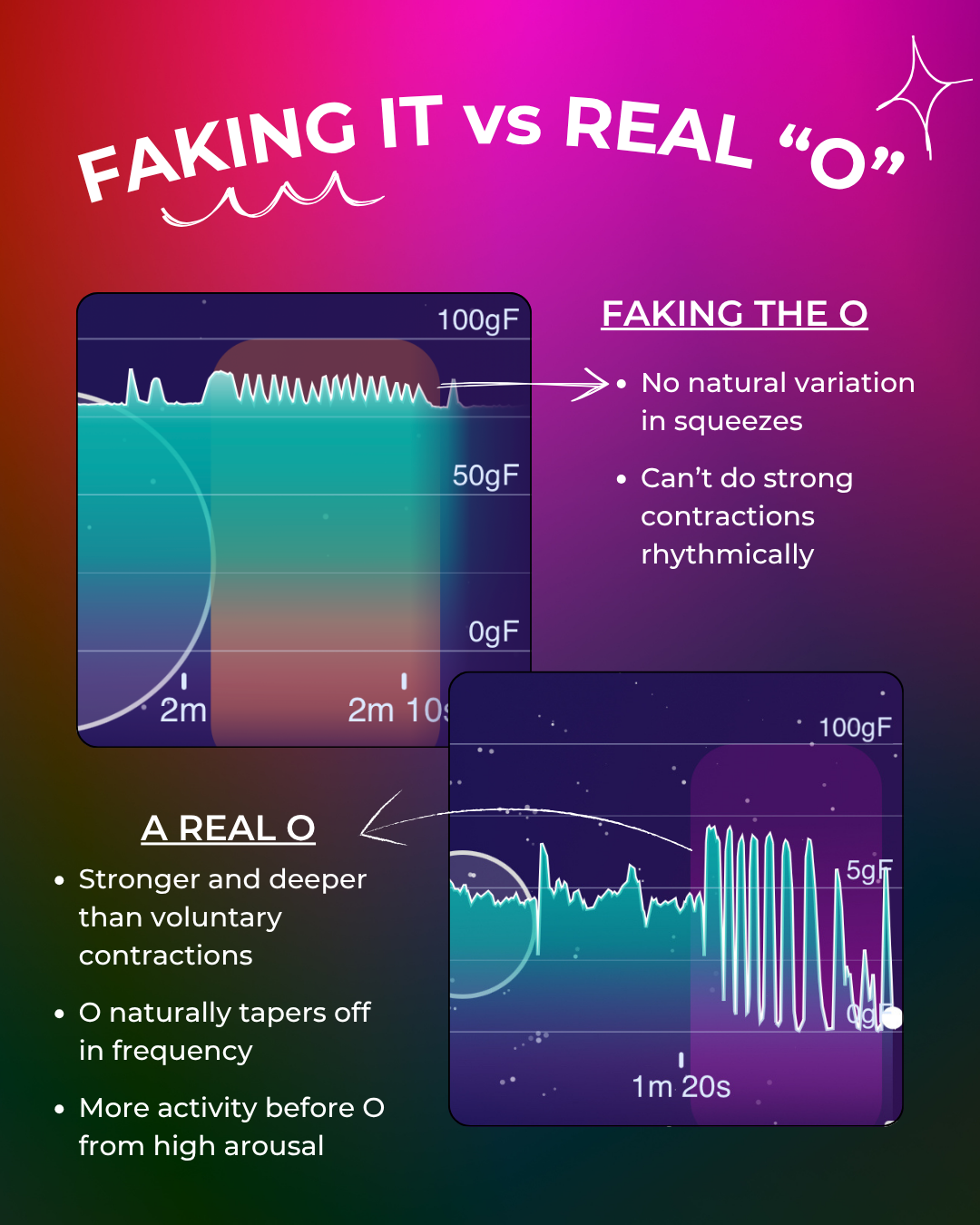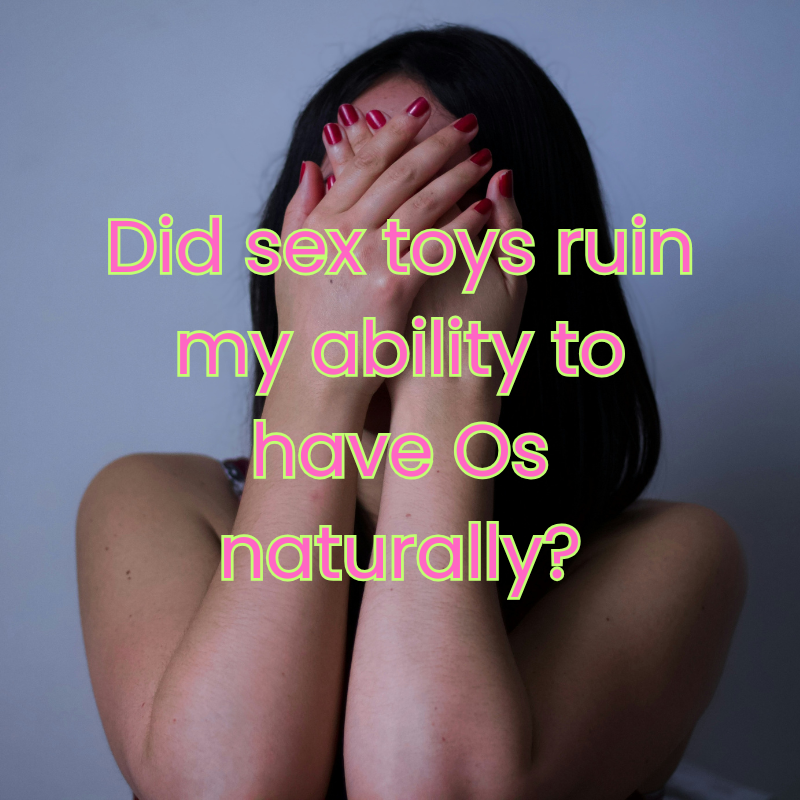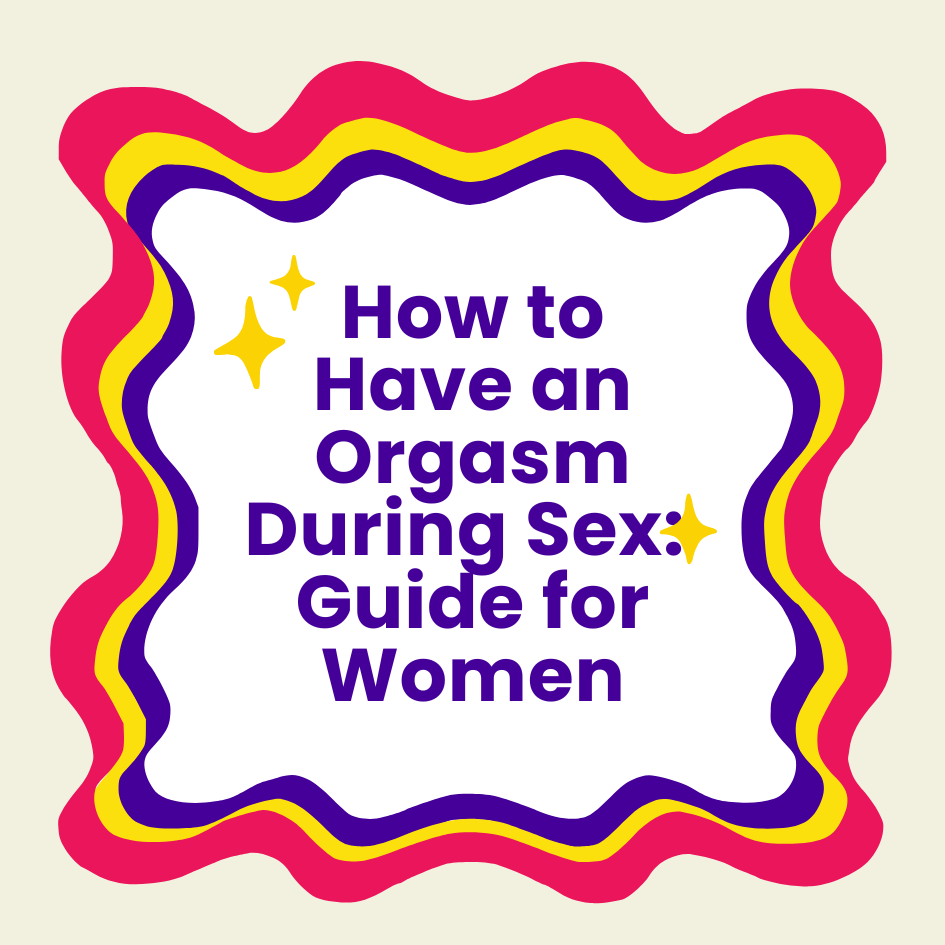
One of the most common questions I get asked as CEO of Lioness is whether we’re trying to close the orgasm gap. It’s a fair question; after all, we develop products that can track physiological arousal and orgasm.
So while the short answer to the question may be “yes,” the truth is, we’re trying to close the pleasure gap and so much more.
Let me explain:
What is the orgasm gap?
The orgasm gap is simply the difference in frequency of orgasm between men and women. (Stay with me; I know the heteronormativity isn’t ideal but, until recently, most studies mainly surveyed cisgender men and women, many who identified as heterosexual. We’re going to discuss a study that compares the orgasm gap between LGBTQ+ individuals a bit later in this article, too!)
In 2017, a study from the Archives of Sexual Behavior surveyed 52,588 adults in the United States. They reported that:
- 95% of heterosexual men climaxed during their last sexual encounter
- 65% of heterosexual women climaxed during their last sexual encounter
Subsequent studies have looked into how the orgasm gap differs between different populations and some of the potential reasons why the orgasm gap exists.
Why is there an orgasm gap?
Studies and discussion from researchers and experts in the field have discussed socio-cultural factors being a major reason for the orgasm gap existing — basically, that society and culture simply don’t lend themselves to female pleasure, much less orgasm.
Below are a few factors contributing to our glaring orgasm gap:
Sex ed is lacking (to say the least)
According to the Guttmacher Institute, only 30 states in the US mandate sex education for student. Only 18 of those states require the program to be medically accurate.
Even in more liberal parts of the country, many of the programs provided to students cover topics such as puberty, STI prevention, and pregnancy, with little room (timewise, and sometimes legally) for educators to discuss topics outside of what’s specifically prescribed by the state or school district.
There is no room to discuss the pleasure side of sex, including some of the interpersonal factors that contribute to the orgasm gap such as consent, communication, pain, and even basic anatomy.
A lot of the following reasons below cascade in part from a lack of basic education in sexual function and pleasure.
The clitoris is ignored almost entirely
Many of us don’t know about the clitoris, whether it’s the function of it, the anatomy, or that it even exists. And how could we? Discussion of the clitoris is usually absent in American sex education classes (and discussing female orgasm in sex ed? What’s that?).
In fact, classroom diagrams of the vulva often do not even include the clitoris. In one study in 2005 by Wade et al, they found that of the 833 undergraduate students who were surveyed, “33% of men and 25% of women mistakenly thought that a woman’s clitoris was always stimulated during intercourse and that women usually had orgasms from intercourse alone.” Knowing about the full anatomy and function of this often excluded body part can make a huge difference in our understanding of sexual function and pleasure.
Moreover, if people do know about the clitoris, it’s usually just the part you can easily see with your own eyes. Both metaphorically and literally, that is only the tip of the iceberg. The clitoris is an entire structure that also exists inside the body behind the labia. The penis and the clitoris are developed by the same body tissue and share many functional similarities when it comes to arousal and blood flow. Like the penis, the clitoris is connected to a whole network of nerves that send signals to the brain.

Many people define sex as PIV (Penis-in-Vagina) penetrative intercourse when it is so much more
The state of sex ed is not entirely to blame for this one. While the focus of sexual intercourse (i.e. PIV sex) for reproduction is a big theme of sex education, our own beliefs and the beliefs of people around us have often reinforced that “sex” often means penetrative sex, specifically.
When a person holds this definition of sex as true, it excludes many other types of sex they could experience. It also discounts the sex being had by people who are not in heterosexual relationships as well as people who do not engage in PIV sex (e.g. erectile dysfunction, painful sex, disabilities, etc.).
In some cases, embracing a broader definition of sex means increasing the likelihood of having an orgasm!
In the same 2017 study from the Archives of Sexual Behavior, women who orgasmed more frequently were more likely to have received oral sex, tried new sexual positions, anal stimulation, and more. Now, keep in mind that it’s not the sexual acts themselves that led to an orgasm. The researchers note that people who were more likely to orgasm spent more time on sex, were more likely to do multiple activities in one session, communicated their desires, and were with a partner who was more likely to listen and reciprocate.
If we're failing to teach the importance of sexual possibility/versatility, communicating with our partner(s), and being responsive and reciprocal in sexual encounters, we're directly contributing to the orgasm gap. Changing the narrative—whether as individuals or a society—has the potential to lessen this gap.
Not caring about a partner’s pleasure is normalized
Some studies implicitly or explicitly focus on populations of primarily college students — a group of people who tend to be younger and less likely to be sexually experienced than people in their 20s-100s+ (the CDC reports that the average age of first vaginal sexual intercourse for a cis-woman is around 17.3 years old)
In one study by sociologist Elizabeth Armstrong et. al., 15,000 heterosexual college students in the United States were surveyed on a number of questions, including the frequency of orgasm. The study found that:
- The percentage of women who have an orgasm in the first hookup was just 10% (for men, it was 31%)
- The likelihood of having an orgasm increases for both men and women after subsequent hookups,
- People in relationships are the most likely to have an orgasm
However, as you will see below, there is still some disparity:
Table One: Percent of Men and Women Having an Orgasm in Four Sexual Contexts
| # of hookups | men | women |
|---|---|---|
| 1st hookup | 31% | 10% |
| 2nd or 3rd hookup | 43% | 17% |
| 4+ hookups | 64% | 31% |
| In a relationship | 85% | 68% |
While it may be true that the orgasm gap is less stark as people have sex with the same partner(s) over and over again, there is still a problematic societal permission to have poor attitudes and expectations about sex and pleasure that can't be ignored.
In heterosexual sex, both men and women expect the man to have an orgasm, but not necessarily the woman. To quote a citation by Lisa Wade, PhD in Are Women Bad At Orgasms?:
“I’m all about making her orgasm,” said a man interviewed for a study about orgasm among college students. “The general her or like the specific her?” he was asked. “Girlfriend her,” he responded, “In a hookup her, I don’t give a shit.”
This is pervasive them on cis-het men’s attitudes about whether they care if their partner has an orgasm. How could there not be a glaring orgasm gap if only one person gets the okay to get off?
LGBTQ+ community sees a reduction in the orgasms gap
Studies that compare the frequency of orgasm on the basis of gender and sexuality seem to show a different experience of the orgasm gap.
In one such study found that while 65% of straight women report “usually” or “always” having an orgasm, 86% of lesbian women reported the same thing. Interestingly, lesbian women nearly matched both gay men (89%) and bisexual men (88%).
But why are lesbian women more likely to have an orgasm versus straight women? For one, the sexual script is often different than for heterosexual couples — in those arrangements, straight men are more likely expected to have an orgasm whereas women may not be. Instead, sex is more likely to be a variety of different activities and doesn’t necessarily end when one person has an orgasm. Also, given that sex and LGBTQ+ topics are often not taught in classroom sex education, LGBTQ+ people will more likely seek out additional resources than cisgender, heterosexual people.
In other words, the lack of attention sex ed pays to the LGBTQIA+ community has forced them to seek out and practice those things the heterosexual community has normalized.
How can we close the orgasm gap?
The issues that drive the systemic orgasm gap are large and can feel overwhelming. Fortunately there’s a lot we can do to close the orgasm gap in our own lives. Many of the reasons are rooted in education and communication:
Learn about the human body
This advice may sound super basic (after all, we’ve been living in our bodies for how long?), but if I’m learning new things about anatomy and sexual function after being in this field for 10 years, I’ll bet that you probably have some new things you can learn, too! There’s no question too basic, especially when it comes to learning about sex.
Start by learning the difference between the vulva and vagina as well as learning more about the anatomy and function of the clitoris. From there, learn more about what the g-spot is (and whether it’s the internal clitoris, the Skene’s glands, or some combination of the two).
Learning the body parts that play a role in pleasure — the things you didn’t learn in sex ed — can be lessons you can apply in the bedroom.
Differentiate between pleasure and orgasm—and don’t prioritize orgasm
While orgasms can be great, they’re not the end-all-be-all to sex. At the end of the day, arousal and orgasm are physiological functions your body may or may not experience due to a variety of physiological and environmental reasons. (Way to make it sound clinical, right? But that’s what it is.)
Arousal and orgasm can happen without the experience being pleasurable at all; likewise, an experience can be highly pleasurable without ever having an orgasm.
Don’t think of pleasure as the journey and orgasm as the destination. Instead, think of pleasure as the journey and the destination, with orgasm being an added stop you may or may not be able to visit.
Have a curious, open-minded approach to sexual exploration
Specifically, redefine what sex means for you. Your definition of sex doesn’t need to match up with another person’s definition of sex, or what you think your community considers sex — and that’s O.K.
Sex doesn’t have to be just penetration (or any at all for that matter). What you might consider foreplay could be sex if that’s what feels right to you. Try changing up your routine, be it by yourself or with a partner. Not only does it add novelty to your sex life, it may very well be more pleasurable than what you thought sex was “supposed” to be!
Carve out some time to masturbate and explore fantasies not with the purpose of having an orgasm, but to learn more about your body, learn what you like, and have fun with it. Sometimes the most pleasurable experiences are from something unexpected, so let yourself explore and discover yourself!
There are many ways you can explore and experience pleasure, and a variety of things can influence your pleasure, including but not limited to stress, health, techniques, partner vs solo, and more. See how your pleasure changes day by day, based on your mood, who you’re with or if you’re solo, or if anything else might be affecting your experiences. If more people can adopt this type of philosophy to their own sex lives, we’ll all be doing our part to close the orgasm gap and have happier, more pleasurable lives.
Help us close the orgasm gap; learn more about your arousal with the Lioness Vibrator!
Lioness is the first and only vibrator that helps you improve your orgasms.
The world’s most advanced vibrator. Precision sensors let you literally see your arousal and orgasm. Experiment, understand yourself, and have better orgasms—after all, as the saying goes, “never measured, never improved.”
Click here to learn more about the Lioness.





